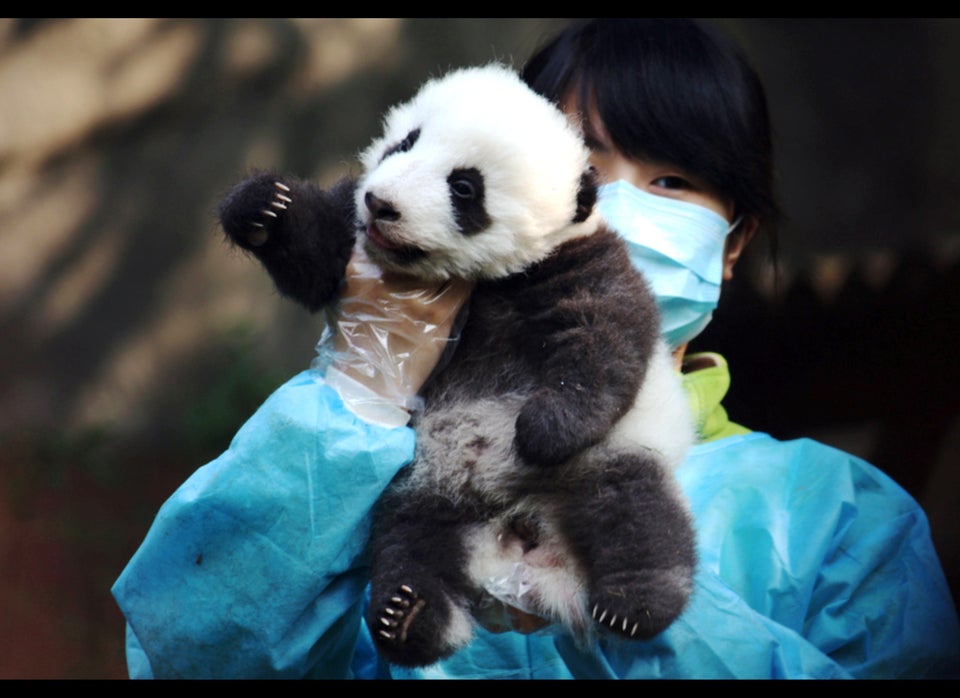
In 2006, a 5-year-old captive-bred giant panda named Xiang Xiang ("Lucky") was released into the wild — the first of his kind to make that transition. Ten months later, he was dead. Chinese wildlife officials reported at the time that it appeared Xiang Xiang had suffered fatal internal injuries after being attacked by other wild-born male pandas in a battle for food and territory. The other bears had not seriously injured Xiang Xiang, but officials theorized that the young panda had been chased into a tree, from which he probably fell.
After this devastating loss, China did not try to release any other captive-bred pandas until October 2012, when a 2-year-old named Tao Tao was released into the Liziping Nature Reserve, an area that only had about 20 wild pandas. Tao Tao had been raised in semi-wild conditions so he would have better fighting and survival skills than Xiang Xiang. Famously, his handlers often dressed in panda costumes so he would not become acclimated to humans.
If Tao Tao survives, it will be an important milestone for China's panda breeding program, which now has more than 350 captive-born bears, compared to an estimated 1,600 giant pandas that currently live in the wild. But after years of breeding difficulties, China now actually has too many pandas in captivity and reintroduction programs need to move forward to help enhance wild populations.
Unfortunately, that may be easier said than done. Dr. Hou Rong, principal researcher at the Chengdu Research Foundation, tells Voice of America that reintroductions are incredibly challenging. "Our panda have been living in captivity for five generations. So the panda mother doesn't know how to live in the wild."
George Schaller, the world-famous ecologist with Panthera and the Wildlife Conservation Society, tells Voice of America there is no excuse for having 350 pandas in captivity. "They should make a real effort to rehabilitate them into areas where there’s good forest, good protective areas and [where] pandas are gone or almost gone," he said.
Schaller says China's culture may be slowing down reintroduction efforts, as they do not want any repeats of what happened to Xiang Xiang. "It is a cultural feeling that the animal is seen as better off with a roof over its head," he said. "And, as you know, if you release animals some of them are going to come to a bad end. Then persons who released it — the officials are going to be criticized and you avoid that by simply not doing it."
Although there appears to be some resistance to speeding up re-release efforts, that doesn't mean China is sitting still. Six pandas were release into an enclosed "wild" forest in January 2012, where they will learn to behave more like wild pandas. Those six were selected from the 108 at Chengdu Research Foundation for traits that would eventually lead to animals better able to survive in the real wild. Panda expert Dr. Qi Dunwu told China.org.cn last year that the six pandas were selected "based on their genetic background, sex ratio, health condition, and many other strict factors." This group may be the next to be released into the wild, whenever that happens.
